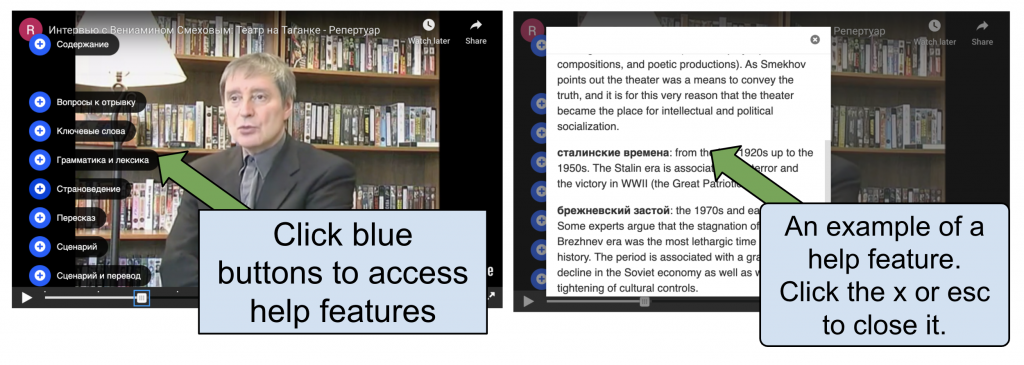Integrating RAILS into your Curriculum

The RAILS lessons were designed to help students of Russian reach the advanced-level in listening proficiency, as defined by the American Council on the Teaching of Foreign Languages (ACTFL) Proficiency Guidelines. The advanced level is characterized by the ability to understand the main ideas and important details of connected (paragraph-length) speech on a variety of topics beyond the immediacy of the situation. The RAILS lessons provide students an opportunity to work toward advanced-level listening proficiency by working closely with video clips that include examples of paragraph-length discourse.
The lessons were developed for students with approximately 300 hours (two years) of formal classroom instruction in Russian.
The following are ideas from the RAILS team on how you might integrate the RAILS lessons into your Russian courses. We recognize that every instructor will find his or her best integration of the lessons as a unique fit for each group of students, but for instructors wishing for guidance the first time they use the RAILS lessons, we provide the following as suggestions.
Assigning lessons
In a 2-semester advanced Russian language sequence, you might assign your students to complete, outside of class, one RAILS lesson per week.
At UW-Madison, we have found it helpful to take part of one class period at the beginning of the semester to go through one example lesson or through the “About the lessons” page that is included in the beginning of each lesson series.
Most lessons will take students 1-2 hours to complete, not including the final writing assignment. The precise time that any student will need to complete any given lesson will depend, of course, on the level of the student, and how much that student avails him- or herself of the extensive help resources in the Listening Assistant, and on how many times the student views the video clips and listens to the many audio clips embedded in that lesson.
We suggest that you encourage students to build their listening comprehension by going through the lessons carefully but trying to use as little help in the Listening Assistant (Помощник) as possible. We also recommend that they go through Listening Assistant help in order from top to bottom. They should try to use the help that is at the top of the page before accessing help features toward the bottom of the page. In the beginning of any new lesson series, students may need to turn to the Listening Assistant for help as they get accustomed to the new discourse patterns (pronunciation, intonation, gestures, lexicon, syntax, etc.), but students should try to wean themselves of this help as they work through the lessons of each series.

Sequence of lessons
If you decide to assign one lesson each week over the course of the academic year, we encourage you to consider the following sequence of lessons, which moves students from easier listening and listening comprehension activities to more challenging ones:
Beginning RAILS Work (these two lesson series in any order)
Intermediate RAILS Work (in suggested order)
- Marina Goldovskaya: Interviews and Films
- About Marina Goldovskaya: The Director and the Films
- Lessons based on the film Solovky Power
- Lessons based on the film Children of Ivan Kuzmich
Advanced RAILS Work (in suggested order)
Capstone RAILS Work (in suggested order)
- RAILS Capstone Lessons
- Conversation with Sergei Khrushchev
- Conversation with Sergei Enikolopov
- Conversation with Viktor Loshak
- Conversation with Evgenii Aksenov
Accountability
The RAILS team recommends that instructors build building accountability for the development of listening skills into the grading of courses into which RAILS lessons are integrated.
Some other ideas for holding students accountable for their work on the RAILS lessons are:
- require students to submit screenshots (one activity) from the given lesson and use that activity as a springboard for discussion in class.
- assign students to write one short essay a week from among those essay topics given at the end of every lesson

